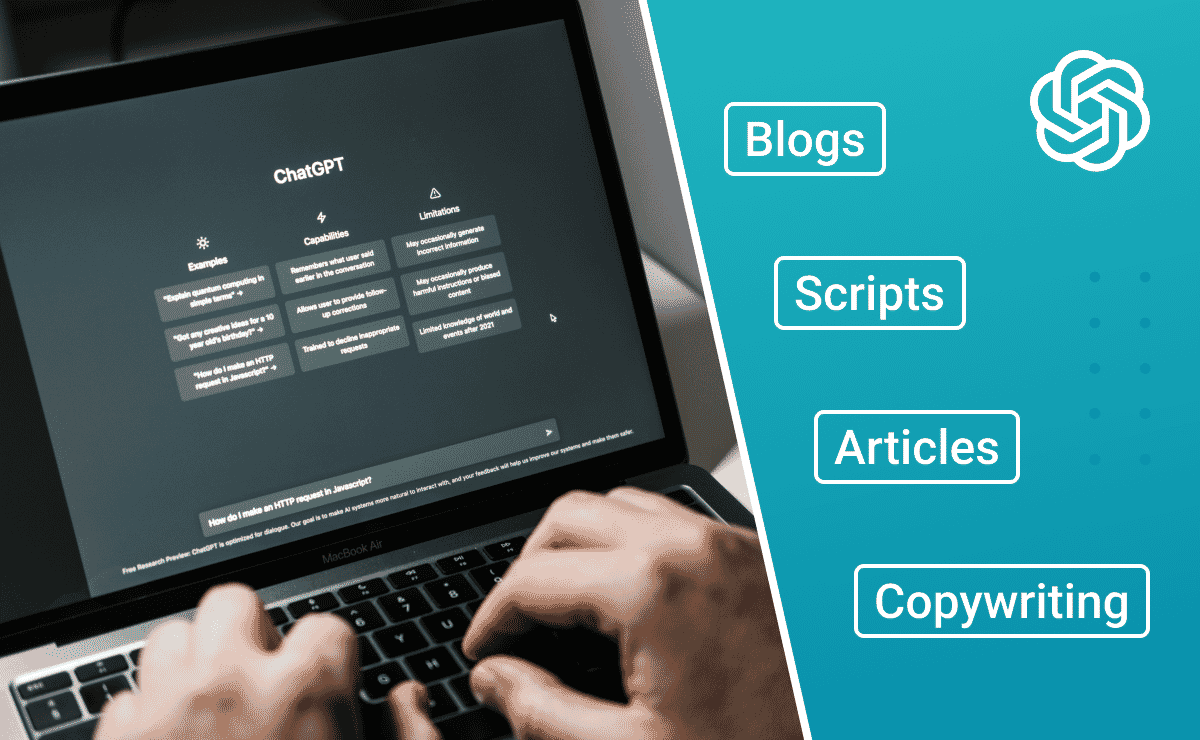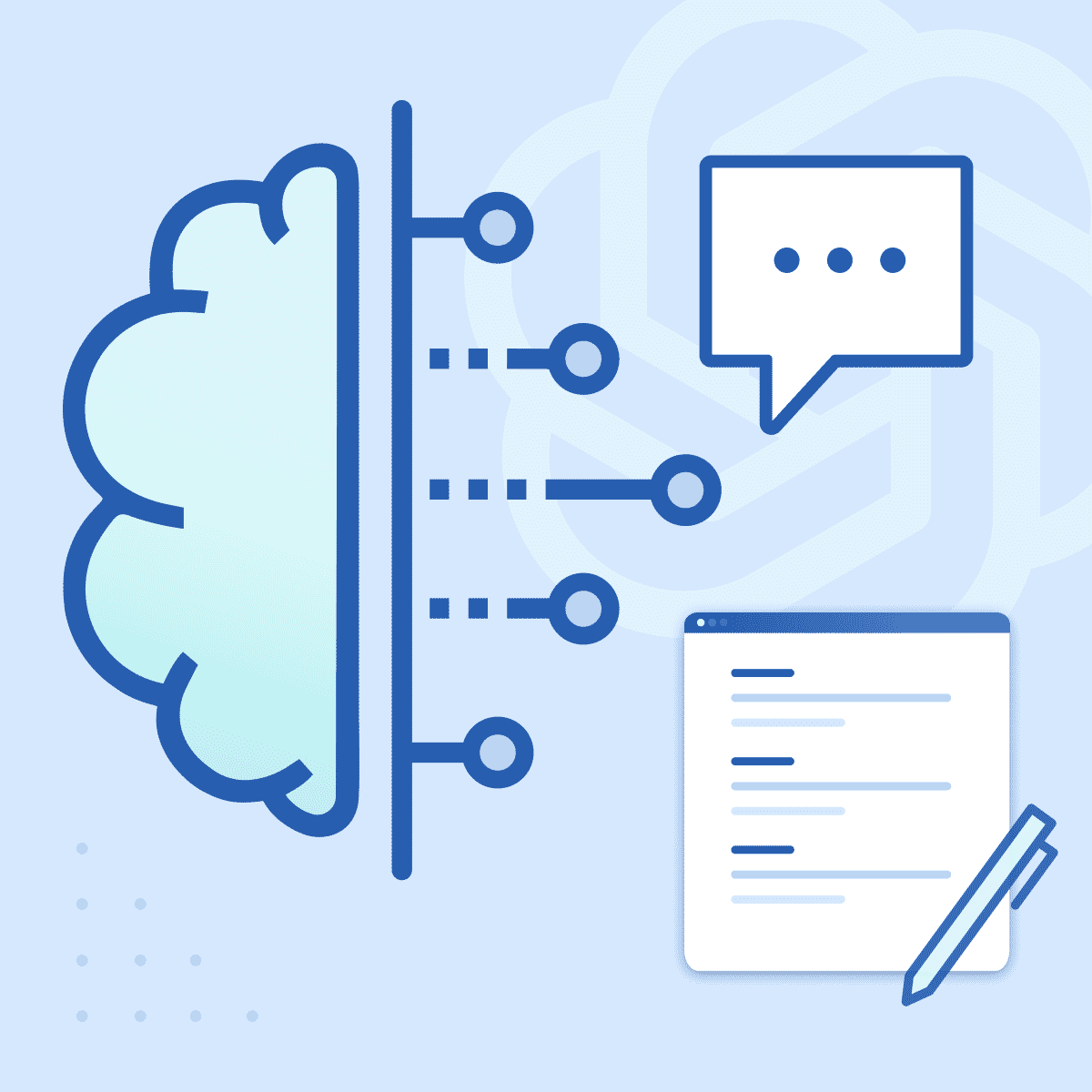The Ascendance of AI in Technical Writing
AI's influence is rippling across sectors, and technical writing is no exception. We've come a long way from basic spell-checkers to sophisticated content optimization engines, signaling a transformative shift in how we approach writing.
Generative AI, epitomized by ChatGPT, is the newest player in this evolving landscape. While tools like Grammarly and QuillBot have become mainstays, ChatGPT elevates the game by offering features designed to streamline and enrich the writing process.
In the new gold rush, the integration of generative AI in everyday life, one particular use case comes to mind. How can we, as technical writers, use this new tool to help drive efficiency in content creation?
Enter MadCap Central's AI Assist —a groundbreaking fusion of Information Architecture and generative AI that is revolutionizing the technical writing industry. Available today, this new feature allows corporate content professionals to directly use ChatGPT within the cloud-based MadCap Central platform, streamlining the production and delivery of technical content while enforcing company policies.
While this initial version concerns the integration of ChatGPT within the Central interface, some hard work is ongoing behind the scenes to make it even more secure and productive. One of the next targets should be to allow organizations to train the LLM on their internal content to keep the tool from sending corporate IP into the internet network.
The Human Factor
The Imperative of AI in Technical Writing
The challenges facing today's technical writers are multifaceted: shrinking timelines, intricate subject matter, and the relentless pace of technological advancements. In this high-stakes environment, AI isn't a mere add-on; it's fast becoming an essential component of a robust technical writing strategy.

The Evolving Role of Technical Writers
Far from rendering human writers redundant, AI tools like ChatGPT amplify their capabilities, freeing them to tackle more strategic, intellectually demanding tasks.
Striking the Balance
The magic lies in harmonizing automation with human ingenuity. While AI excels at handling repetitive, time-consuming tasks, a skilled writer's nuanced understanding and contextual insight remain irreplaceable.
A tactical enabler for content strategy
AI isn't just a thought-provoking concept; it's a tactical enabler for your content strategy. For instance, machine learning algorithms can sift through your content repository to identify patterns or thematic elements, streamlining your information architecture.
Imagine a technical documentation set that span over 500 PDFs. Manually identifying overlapping or redundant content is a monumental task. But AI can scan through these documents and flag duplicates or similar sections, saving hours of labor and ensuring consistency.
Identifying and Typing Information
Content isn't just paragraphs and images; it's an asset with various attributes—metadata, taxonomy, and more. AI can help sort through this unstructured data, type it, and make it searchable or reusable.
Say you have a customer support database full of articles. AI can automatically analyze each piece to determine what product it relates to, what problem it solves, and what audience it serves, then tag it appropriately. This dramatically enhances searchability and utility, especially in a dynamic environment like a CCMS.
Another use case could be identifying all the "task topics" within your content management system. In structured writing, different types of content need to be identified and classed according to type in the DITA XML model, including tasks, concepts, references, glossaries, etc. Using AI to comb through your knowledge base to identify and correct mis-typed information is a game changer. Having these information types correctly identified and tagged means you are better able to make good use of your content. With additional metadata, you can better personalize the content, identify improvement areas, and better manage your content.
Creating and modifying your content strategy becomes easier as you will better understand what type of content you currently have and adapt to cover any missing information types within your documentation.
Keeping Knowledge Bases Dynamic
Your knowledge base isn't static, and if it is, you need to start working on making it evolutionary. AI can scan this data continuously to suggest updates or identify gaps.

AI can work as an ever-vigilant auditor, scanning articles for outdated information or missing links and alerting you for necessary updates. This ensures your knowledge base remains accurate and up to date, which in turn increases user trust.
Tied in with other quality management systems or knowledge bases, AI can also help identify other areas of impact in the documentation following an engineering change request, regulatory updates, or updates to existing requirements.
Suggesting Reuse
Content reuse is the backbone of efficient documentation. AI can suggest where existing content can be reused, saving you the time and effort of rewriting or reformatting.
AI can be particularly effective if you specialize in DITA XML or Topic-Based authoring. It can scan existing topics and suggest where a topic could be reused in a new user guide or another deliverable, optimizing your workflow. While some companies offer services in identifying reuse in your content, this is usually done retroactively or during content migration from one format to another. AI allows you to do this at the point of content creation by the author in real-time.
Curating Metadata and Building Taxonomy
Choosing the right metadata and taxonomy is often complicated, but AI can simplify it by analyzing your content and suggesting appropriate tags or categories.
Active metadata management once demanded meticulous attention to detail, first to determine the appropriate metadata and then to avoid the creation of unnecessary variants. AI can actively scan existing content and recommend a unified taxonomy, guaranteeing a seamless user experience across diverse content forms.
Current trends in Generative AI use
Demolishing Writer's Block
We've all faced the daunting glare of a blank screen. ChatGPT is your creative collaborator, offering topic suggestions, generating outlines, and even providing content snippets to jumpstart your writing journey. Why not leverage ChatGPT to distill complex engineering principles into easy-to-understand guides, effectively neutralizing the dreaded writer's block?

Accelerating Content Creation
Why start from scratch when you can build on a solid foundation? ChatGPT can auto-generate content based on specified topics, allowing you to focus on fine-tuning and customization.
Data Analysis and Interpretation
Sifting through data jungles to unearth relevant insights is a core part of the technical writer's job. But it can be painfully long and complex. Using ChatGPT's data analysis capabilities can make identifying essential information quicker, producing summary tables of information, and simplifying complex information to create more precise and data-driven documentation sets.
Ensuring Quality and Accuracy
By scanning entire document sets produced by sometimes very different authors, ChatGPT can help harmonize large document sets that would take months or years of analysis to achieve manually. Thanks to ChatGPT's sophisticated algorithms, you can ensure that your content meets higher quality standards across the board.
Content Optimization and Analytics
Beyond mere writing, ChatGPT can also offer a lens into user engagement and content efficacy, arming you with actionable insights for future projects. Analytics on user engagement, searches, and more can be used to create better content that meets the end user's needs as opposed to what was strategized in the office.
Safeguarding Proprietary Information
The main worry with the current crop of AI tools is securing an organization's intellectual property. However, a new market has also sprung up to deal with this. Creating tools and systems that, when synced with internal knowledge management systems, ChatGPT can be used internally without sending IP to the public server instances, ensuring that sensitive data remains confined within the organization's secure environment.
ChatGPT's ability to learn from internal company databases makes it invaluable for internal documentation and knowledge dissemination.
The Road Ahead
As AI matures, its role in technical writing will only expand. The horizon promises automation and a symbiotic relationship between human writers and AI.
To stay ahead of the curve, technical writers must proactively familiarize themselves with these emerging technologies and understand their potential impact on existing workflows.

From dismantling writer's block to fortifying data security, MadCap Central's IA Assist with ChatGPT is a watershed moment for technical writers.
As AI evolves, so does its role in technical writing. The future we're stepping into is not just automated—it's intelligently collaborative. Technical writers must become vanguards, embracing these tools, understanding their capabilities, and integrating them into the fabric of their workflows.
Embrace the transformation, but tread carefully. Recognize both the strengths and limitations of AI and employ it as a tool to augment, not supplant your unique skills.
Additional Resources and Tools
Explore MadCap Central's AI Assist and ChatGPT integration.
Tune in to our "Do More with Less" webinar for hands-on guidance.











